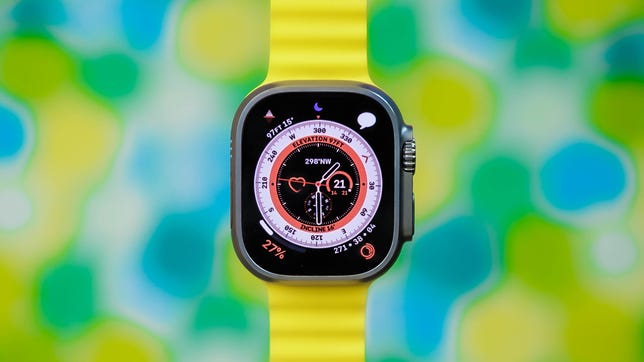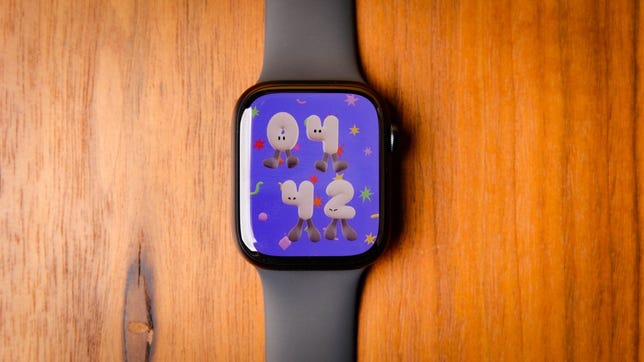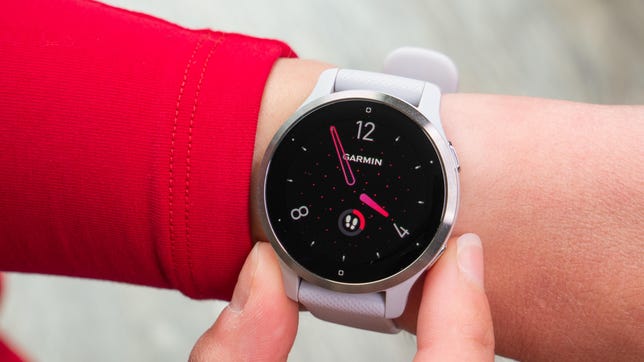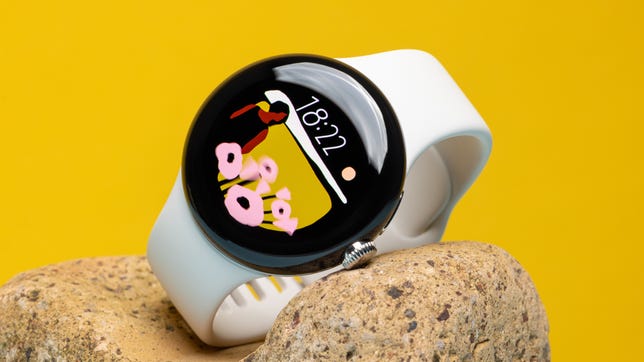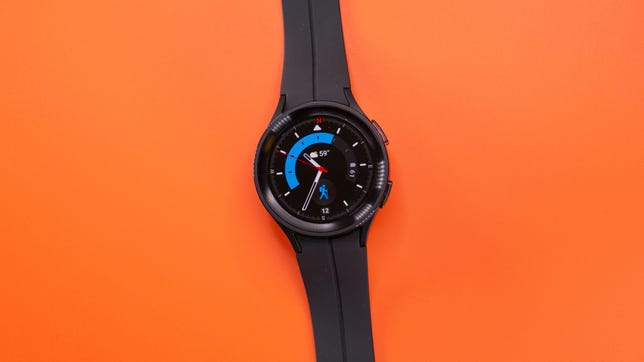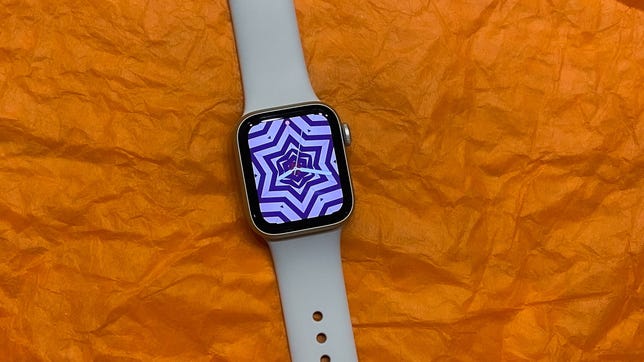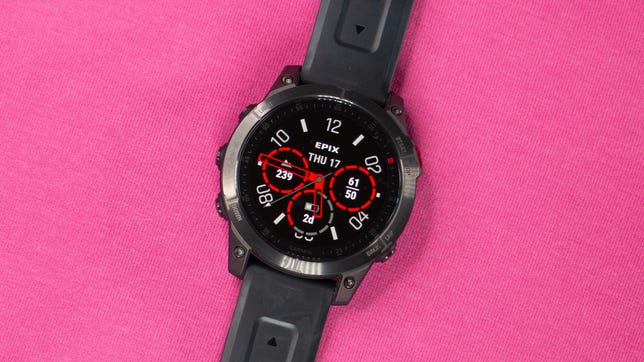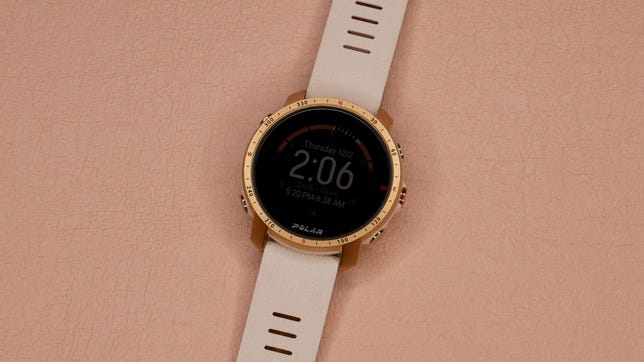Technologies
Best Smartwatch for 2023
Check out our favorite smartwatches for every wrist and budget.

There are plenty of worthwhile smartwatches out there, from the Apple Watch to Samsung’s Galaxy Watch and everything in between. Finding the right one depends on your budget and what you’re hoping to get out of a smartwatch. You’ll also want to consider which type of phone you have, since certain models only work with iPhones or Android devices.
But that only scratches the surface. Most smartwatches should include additional features such as heart-rate monitoring, activity tracking, sleep tracking, GPS tracking and the ability to show phone notifications on your wrist. Many of the best smartwatches also support contactless payments and others have LTE or cellular connectivity, so you really can leave your phone at home.
We’ve rounded up the top smartwatches you can buy in 2023 based on function, price and compatibility to help you decide which is the best smartwatch for you. This list is updated periodically with new reviews of the best smartwatch options. For more buying advice, check out our guide to how to buy a smartwatch.
Read more: Best Budget Smartwatches Under $100
James Martin/CNET
The Apple Watch Ultra is a souped-up Apple Watch Series 8, but comes with a tough titanium construction, larger 49mm case size and new Action button to quickly start workouts or launch apps. It has an incredibly bright screen, able to reach a maximum of 2,000 nits which makes it incredibly easy to see when adventuring in the great outdoors. It also has a built-in siren for safety and dual-band GPS for accurately tracking your route. LTE is also onboard so you can venture out without a phone and still stay connected.
While many of its key hardware and software features are aimed towards adventurers and athletes, it’s still a fantastic all-round smartwatch. The microphones help reduce wind noise during calls and you get all the same health and fitness tracking features found on other Apple Watches, including a blood oxygen sensor, electrocardiogram (ECG or EKG) app, fall detection and emergency SOS. The battery also lasts at least twice as long as all other Apple Watch models. But it’s only compatible with the iPhone, so if you have an Android phone, you’ll want to look at another option on this list.
James Martin/CNET
The Apple Watch Series 8 might not be as adventure-focused as the Apple Watch Ultra, but it still features a dust- and crack-resistant design, a blood oxygen and ECG sensor and comes in 41 and 45mm sizes. You can also choose a cellular or LTE model that lets you take calls and answer messages from your wrist without your phone, although that does cost extra.
It also has a new temperature sensor that can be used for applications like ovulation tracking. But battery life generally lasts 18 hours with typical use, less than many of its competitors.
Lexy Savvides/CNET
The Garmin name has long been synonymous with fitness tracking, but many of the company’s earlier watches haven’t exactly looked or felt that «smart.» The Venu 2 has a sleek, round design with a bright screen that’s easy to see in direct sunlight. It’s also compatible with Android and iOS, has great in-depth fitness features like comprehensive workout tracking, a body battery that tells you if you should push yourself to workout or take a rest day, plus women’s health tracking. It can also take blood oxygen levels and the battery will last several days with moderate use.
The downside is that it doesn’t have as many smart features as other watches on this list, including no LTE or cellular connectivity. If you want a speaker and mic onboard to talk to your voice assistant or answer quick calls on your wrist while your phone is in range, take a look at the newer $450 Garmin Venu 2 Plus. It only comes in one 43mm size but shares all the same features with the original Venu 2 and 2S.
Andrew Lanxon/CNET
Google’s first Pixel Watch wants to tackle the Apple Watch head-on. For the most part, it succeeds thanks to a sleek, curved design and a range of health sensors including an ECG app and blood oxygen tracking. It has a suite of fitness tracking features and analysis through the Fitbit app and accurate heart rate tracking.
Beware that the battery isn’t as strong as other options on this list and you will likely find yourself charging this watch every day, especially if you like to do outdoor GPS workouts and track your sleep. It’s also only available in one 41mm size.
Lexy Savvides/CNET
Samsung’s Galaxy Watch 5 and Watch 5 Pro are among the best Wear OS watches you can get right now. They have longer-lasting batteries than last year’s Galaxy Watch 4 models and plenty of great fitness tracking features. Google apps including YouTube Music, the Google Assistant and Google Maps are available, with many more apps accessible through the Play Store. Samsung is also bringing cycle tracking to the Galaxy Watch 5 and Watch 5 Pro by partnering with Natural Cycles.
You do, however, need a Galaxy phone to use the ECG, but all the other features work seamlessly with other Android phones. Both watches miss out on the classic physical rotating bezel, one of the signature features of Samsung’s Galaxy Watch and Gear watches from years past.
If you’ve never owned an Apple Watch, this is the one to get. The second-generation Apple Watch SE is a cheaper alternative to the Series 8 but has plenty of the same great features including crash detection, heart rate monitoring and water resistance. It misses out on health sensors like ECG, blood oxygen and temperature sensing like the Series 8, but the most notable difference between the two is that the SE doesn’t have an always-on display. But you might not miss it if you’ve never had this smartwatch feature.
Angela Lang/CNET
The Versa 3 is compatible with both iOS and Android phones and lets you choose between Alexa or Google Assistant as your go-to voice assistant. It doesn’t offer all the apps and smart features as some of its competitors, but it’s a well-rounded smartwatch with plenty of health and fitness features to keep you on track like onboard GPS and live heart rate zone notifications. It has the best sleep tracking feature on this list and even gives you health features including a breakout of your SpO2 and body temperature data overnight (Fitbit Premium users). There’s a newer version, the Fitbit Versa 4, but we haven’t fully reviewed that watch yet so stay tuned.
Lexy Savvides/CNET
The second-generation Garmin Epix features a tough titanium construction and a laundry list of features athletes want, including extensive mapping capabilities. It also has a bright AMOLED display which sets it apart from a multitude of other sports watches, including Garmin’s own Fenix line, that often use transflective displays. The Epix 2 also has great battery life considering its size and feature set, lasting almost a week under regular conditions.
But it doesn’t have LTE capabilities or an ECG app. Considering this is the most expensive watch on this list at $1,000, that might be a big drawback.
Lexy Savvides/CNET
Polar’s Grit X Pro is an outdoor watch for adventure seekers. The rugged design can withstand the elements as it’s water-resistant to 100 meters and has a sapphire glass watch face that’s scratch-resistant. With onboard maps, turn-by-turn navigation and overnight recovery tools, you can determine if you’re ready to take on that workout. This is much more a sports watch than a smartwatch, but it can still get notifications from your phone, control music playback and has 24/7 heart rate monitoring.
The touchscreen is less responsive than other watches on this list — it’s transflective rather than AMOLED — but you can get away with using button controls.
More fitness trackers and clocks
- 5 Years Ago, I Thought Apple Watch Was Very ‘Meh.’ Here’s Why I Changed My Mind
- Apple Watch SE vs. Apple Watch Series 7
- 13 Apple Watch Bands to Get on Amazon
- Best Apple Watch Series 7 Cases
- How to Buy a Smartwatch or Fitness Tracker
- Best Fitness Trackers for 2023
- Best Alarm Clock for 2023
- Best Alarm Clocks for Sunrise
- Best Home Exercise Equipment to Buy for 2023
- Best E-Bikes to Ride in 2023
- Best Peloton Alternatives: 5 Great Indoor Exercise Bikes That Cost Less
Technologies
Razer’s Wolverine V3 Pro 8K Controller Won’t Replace My Mouse and Keyboard, but Here’s Where It Shines
I applaud the absurdly high polling rate, six extra remappable buttons and TMR sticks, but let me tell you why I’m sticking with my keyboard and mouse for most games I play.
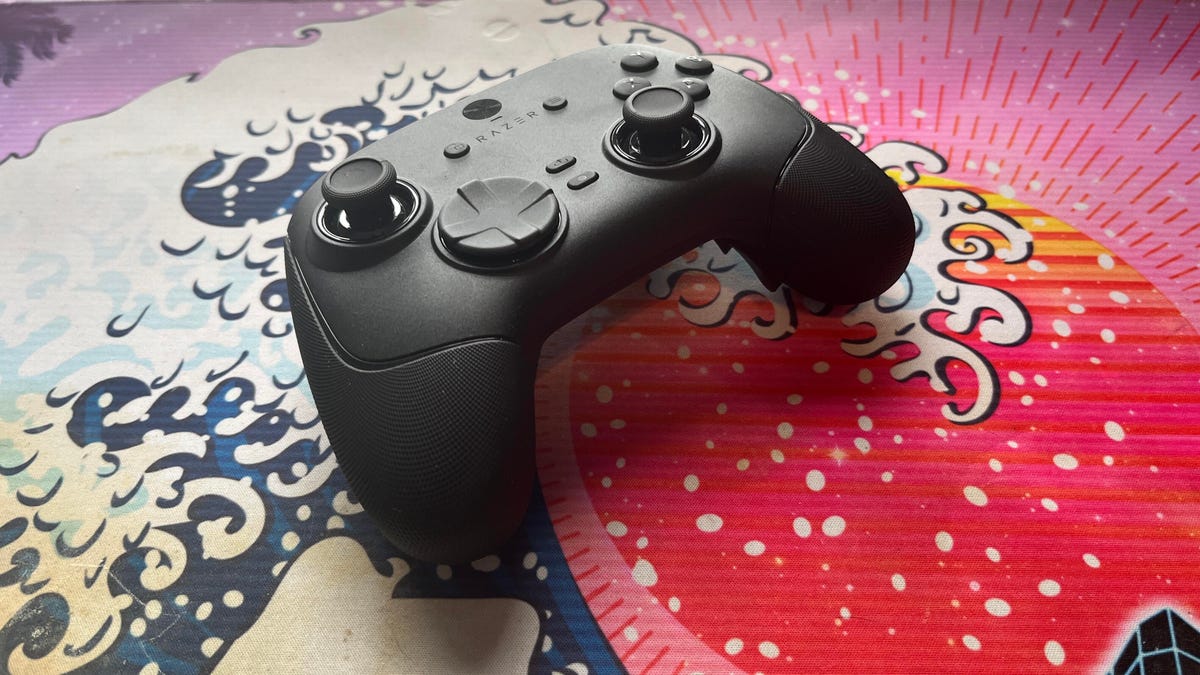
The Razer Wolverine V3 Pro 8K PC controller was not built for me, but admittedly, this has more to do with me as a gamer than the controller itself. I grew up playing the PlayStation 3 and PS4 consoles, cutting my teeth on slim, compact DualSense controllers. Over the past five years, I’ve gamed exclusively on my PC and have grown accustomed to the increased precision of a mouse and keyboard.
The Razer Wolverine V3 Pro 8K PC controller is the antithesis of a DualSense controller. It’s a chunky piece of hardware that might feel natural if you were raised on an Xbox and its bulky controllers, but it took me multiple gaming sessions to get acclimated to the sheer size of the Wolverine V3 and how it fit into my hands, especially since I don’t use a claw grip.
Size aside, this is a PC controller with every bell and whistle you can think of — and its price of $200 reflects that. The 8,000Hz polling rate ensures buttery smooth inputs with no lag, and tunnel magnetoresistance joysticks make every in-game movement feel fluid and calculated. Six extra remappable buttons help you up your game — they’re super handy for hero shooters like Marvel Rivals and hectic games like Battlefield 6. This is a premium product for gamers who are hoarding some serious hardware.
Its price is in line with other premium controllers. One of CNET’s best Xbox controllers is the Wolverine V3 Pro for Xbox, which also costs $200. Similar controllers like the Scuf Instinct Pro and Vitrix Pro BFG are in the same ballpark, pricewise, but the Wolverine V3 Pro 8K PC has a winning combination of competitive variables that make it feel exceptionally easy to use.
This controller is chock full of top-of-the-line technology and feels satisfying to use, but it needs to clear a high bar to feel truly worthwhile as a dedicated PC controller.
Chunky controller, satisfying feedback
When CNET’s Josh Goldman reviewed the Wolverine V3 Pro Xbox wireless controller, he called it «just about perfect.» If it isn’t broken, don’t fix it: Razer replicated many of its successes with the Wolverine V3 Pro PC controller.
The Wolverine V3 Pro 8K PC is the same size as the Wolverine V3 Pro Xbox controller, which is to say it’s a bit chunkier than a standard Xbox wireless controller, but it’s surprisingly much lighter than its Xbox cousin. It weighs just 220 grams, which is appreciably lighter than the Xbox version that weighs 304 grams. And while the Wolverine V3 Pro 8K PC is nowhere near as slim as a DualSense controller, it’s still much lighter than its Sony competitor — a stock DualSense controller weighs 280 grams.
Every button on this controller has a crisp, clean clickiness that scratches the same mental itch that a good mechanical keyboard might. Whether you’re gripping the trigger, pressing a button or squeezing one of the four remappable back paddles, you’ll hear incredibly satisfying auditory feedback that leaves no doubt that the controller is receiving your inputs. At one point, while I sat through a particularly long matchmaking queue, I found myself squeezing the triggers to entertain myself — the snappy pops were enough to keep me off TikTok.
The biggest difference between the V3 Pro Xbox and V3 Pro PC controllers is the variable polling rate — that dictates how often your controller is communicating with the computer. It’s like a refresh rate for your crosshair positioning.
The Wolverine V3 Pro Xbox just can’t compete here: That controller has a wired 1,000Hz polling rate for PC gameplay. The V3 Pro PC controller can be toggled for multiple polling rates, with an 8,000Hz maximum setting. This means the PC controller can report your input data eight times faster than the Xbox controller.
Every movement, turn and button press feels incredibly fluid. It’s safe to say that there’s no input lag with the Wolverine V3 PC controller, but I don’t think it matters too much for moment-to-moment first-person shooter gameplay. If you’re driving a car (or a tank) and you need to stop on a hairpin, you might appreciate Razer’s HyperPolling technology. If you’re not playing a tactical shooter like Counter-Strike or Rainbow Six: Siege, that 8,000Hz polling rate is overkill — if you’re a casual gamer crushing Call of Duty public lobbies with your pals, you’re probably not going to notice it in any of your firefights.
Better than a mouse and keyboard? That’s a little more complicated
I tested out the Wolverine V3 Pro 8K PC controller on Marvel Rivals, ARC Raiders and Battlefield 6 (my current first-person shooter obsession). It’s an extremely solid choice for at least two of these games, and I likely won’t be using my DualSense controller anytime soon.
I had a great time firing magic bolts in Marvel Rivals and rolling tanks through the streets of Cairo in Battlefield 6, but this is a controller that was supposedly designed for high-level shooter gameplay. I’m saddened to report that, when it comes to dominating a first-person shooter match or competing to survive in an extraction shooter, I’d much rather stick to a mouse and keyboard.
In close-range battles, I didn’t feel like the Wolverine controller particularly helped me gain an advantage over my opponents. Mouse-and-keyboard players were often able to lock onto me quicker, even with a high look sensitivity and built-in aim assist. And I felt outmaneuvered and outgunned by mouse-and-keyboard players in the fastest-paced fights. But the controller’s precision TMR thumbsticks made it easy to quickly lock my crosshairs onto enemies and mow them down from afar with light machine guns or sniper rifles in long-range battles.
I also find it useful for games like Battlefield that have a lot of buttons to micromanage during moment-to-moment gameplay. If you want to swap your fire mode from automatic to single-fire, mount your weapon’s bipod against a flat surface or pull out an invaluable class gadget, you’ll be reaching across your keyboard to do so. The six remappable buttons on the Wolverine V3 Pro 8K PC are great for these situations; I loved that I could tap fire my hulking light machine gun by gripping one of the controller’s back paddles.
The controller really shone for vehicle combat, though. I found myself gravitating toward my mouse and keyboard for infantry gunplay, but anytime I’d jump into a tank, I’d reach across my desk and grab the Wolverine again. Having pressure-sensitive triggers helps with any in-game driving: A slight squeeze lets me cautiously move forward, scanning for enemy mines, while fully pulling the trigger down helps me speed out of dangerous situations. Rebinding automatic repair jobs and weapon switches to the back paddles also helped me focus more on in-game combat, which helped me keep my armored vehicles in the fight for longer. With my DualSense controller, I’d have to awkwardly fumble with the D-Pad to activate my vehicle abilities. The Wolverine controller is the definitive way for a Battlefield tank enthusiast to play.
Outside of standard first-person shooter gameplay, I also found the Wolverine V3 PC controller to be handy for hero shooters — with some caveats. When I play Marvel Rivals, I mainly play tanks that require an extensive amount of ability usage but very little aim. Characters like Doctor Strange thrive when you can quickly string inputs together, and rebinding the controls to the Wolverine’s back paddles is great for that.
On the other hand, speedy divers that need to jump in and out of the enemy team’s backline and aim-intensive snipers feel tougher to play with the Wolverine controls, and I’d swap back to my mouse and keyboard whenever I wanted to switch off tank characters and fulfill another role for my team.
One game I don’t recommend the Wolverine V3 Pro PC for is ARC Raiders. While the remappable buttons make it easy to reach for healing items and grenades, losing out on the precision aim of a mouse and keyboard just isn’t worth it in a game where one death can set your progress back by several real-life hours. The controller lets me hold my own against killer ARC robots, but once real players join the mix, I’d rather use my tried-and-true PC hardware setup.
That’s not to say that the Wolverine controller is terrible for a tactical third-person shooter: The back paddles are a great way to quickly access any healing items, grenades and other consumables you’re carrying, which could be the difference between life and death. But when I have teammates depending on me to help them escape with their hard-earned loot, I just don’t trust the Wolverine controller to help me aim better than I can with my trusty mouse and keyboard.
For playing first-person shooters like Call of Duty or Apex Legends at breakneck speeds, the Wolverine V3 Pro 8K PC likely won’t replace your mouse and keyboard. But if your ideal competitive game centers on slower gunplay and long-range firefights, this is the most precise controller I’ve ever laid hands on (and you’ll receive a healthy heaping of help from aim assist to boot).
For the games I like to play, the Wolverine V3 Pro PC controller hasn’t become my primary gaming peripheral. Instead, it’s become a great situational swapout that complements my mouse and keyboard. As much as I like keeping it on deck for a long gaming session, $200 is a high price for a part-time controller.
Technologies
The Most Exciting Video Game Rumors and Leaks Ahead of 2026
Technologies
Today’s NYT Mini Crossword Answers for Wednesday, Dec. 17
Here are the answers for The New York Times Mini Crossword for Dec. 17.

Looking for the most recent Mini Crossword answer? Click here for today’s Mini Crossword hints, as well as our daily answers and hints for The New York Times Wordle, Strands, Connections and Connections: Sports Edition puzzles.
Need some help with today’s Mini Crossword? Read on. And if you could use some hints and guidance for daily solving, check out our Mini Crossword tips.
If you’re looking for today’s Wordle, Connections, Connections: Sports Edition and Strands answers, you can visit CNET’s NYT puzzle hints page.
Read more: Tips and Tricks for Solving The New York Times Mini Crossword
Let’s get to those Mini Crossword clues and answers.
Mini across clues and answers
1A clue: Nod (off)
Answer: DOZE
5A clue: Naval submarine in W.W. II
Answer: UBOAT
7A clue: Tricky thing to do on a busy highway
Answer: MERGE
8A clue: Heat-resistant glassware for cooking
Answer: PYREX
9A clue: Put into groups
Answer: SORT
Mini down clues and answers
1D clue: Break up with
Answer: DUMP
2D clue: Falls in line, so to speak
Answer: OBEYS
3D clue: Legendary vigilante who cuts a «Z» with his sword
Answer: ZORRO
4D clue: Rarin’ to go
Answer: EAGER
6D clue: Common reminder for an upcoming appointment
Answer: TEXT
Don’t miss any of our unbiased tech content and lab-based reviews. Add CNET as a preferred Google source.
-

 Technologies3 года ago
Technologies3 года agoTech Companies Need to Be Held Accountable for Security, Experts Say
-

 Technologies3 года ago
Technologies3 года agoBest Handheld Game Console in 2023
-

 Technologies3 года ago
Technologies3 года agoTighten Up Your VR Game With the Best Head Straps for Quest 2
-

 Technologies4 года ago
Technologies4 года agoBlack Friday 2021: The best deals on TVs, headphones, kitchenware, and more
-

 Technologies4 года ago
Technologies4 года agoVerum, Wickr and Threema: next generation secured messengers
-

 Technologies4 года ago
Technologies4 года agoGoogle to require vaccinations as Silicon Valley rethinks return-to-office policies
-

 Technologies4 года ago
Technologies4 года agoOlivia Harlan Dekker for Verum Messenger
-

 Technologies4 года ago
Technologies4 года agoiPhone 13 event: How to watch Apple’s big announcement tomorrow

